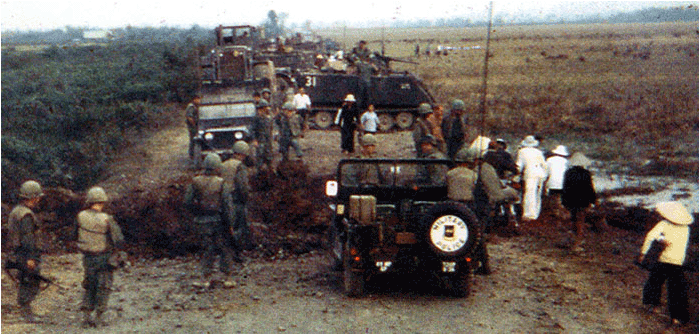The importance of convoys providing critical supplies in relationship to military engagements could not be more eloquently described than it was over 100 years ago by a young British Army officer. The year was 1900, the battle was the Reconquest of the Sudan, and the young officer was Winston Churchill. His book of the conflict, The River War, first published in 1900, contains this passage....
“In a tale of war the reader’s mind is filled with the fighting. The battle-with its vivid scenes, its moving incidents, its plain and tremendous results-excites the imagination and command attention.... The long trailing line of of communications is unnoticed.... Victory is the beautiful, bright colored flower. Transport [convoy] is the stem without which it could never have blossomed."
Although his passage refers to the railway transport of supplies during the Sudanese War, the point he makes could not be missed. Without logistical [supplies] support, which is the lifeblood of any military operation, the war machine would quickly grind to a halt. Churchill’s book dealt with a desert war that took place just before the turn of the 19th century. Vietnam, even with the modern technological advances of 100 years, would present much more of a challenge to logistical supply.
Vietnam was the first war in which rear areas were exposed to actions similar to those of combat units on a daily basis. The Vietnam War was the first, modern, nonlinear battlefield for the United States military.
In addition to the usual problems of conducting combat operations, the deployment of US forces to Southeast Asia in the 1960's and early 1970's required superimposing the sophisticated tasks of a modern Army upon an underdeveloped environment and adapting the tasks to the demands of a wide spectrum of conflict. These demands included helping fulfill the basic needs of the agrarian population, the frustrations of dealing with an entrenched, well-organized Viet Cong insurgency, and conducting conventional campaigns against well-trained, well armed and determined North Vietnamese Army regular forces who could retreat to hidden sanctuaries in Laos and Cambodia that were off limits to allied forces..
Mission, enemy, terrain, troops and time available (METT-T) and the supported unit commanders requirements dictated how units were supported. As the war progressed, combat arms units with greater mobility (air cavalry, airmobile infantry, and light artillery) were often supplied entirely by air. Combat forces that moved less frequently were generally supplied by air on initial occupation of a fire base and later by ground, if roads were available and could be cleared of mines and secured.
 18th Bde.
18th Bde. 720th
720th





